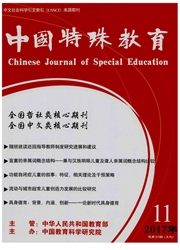

 中文摘要:
中文摘要:
目的:探究考试焦虑不同程度个体的选择性注意抑制功能。方法:通过考试焦虑问卷,筛选出高、低考试焦虑大学生,以其为被试,采用改进的情绪负启动范式,控制刺激材料的相关度和效价,以语义判断的情绪负启动任务,考察高考试焦虑者的注意抑制能力。结果:高考试焦虑组在考试相关高、低威胁刺激和考试无关高威胁刺激条件下,负启动条件下的反应时间显著短于控制条件下,负启动量显著小于低考试焦虑组,且负启动量值为负;在考试无关低威胁刺激时,负启动条件下的反应时间显著长于控制条件下,负启动量为正,且与低考试焦组无差异。结论:高考试焦虑者对考试相关的特定刺激和一般性高威胁刺激均存在注意抑制困难。
 英文摘要:
英文摘要:
This study aims to explore the inhibition of selective attention by people with test anxiety, by using the test anxiety scale (TAS) to survey college students with high-and low-degree test anxiety, and using the mod- ified negative affective priming paradigm to control the test-correlation and valence of stimulus material. The result show the following, the group with high-degree test anxiety, stimulated by the test-related high-and low-degree threats and the high-degree threats irrelevant to the test, spends a significantly shorter reaction time under the condition of negative priming than under the controlled condition, with its negative priming values significantly being less than the group with low-degree test anxiety; the group with high-degree test anxiety, stimulated by the low-degree threats irrelevant to the test, spends a significantly longer reaction time under the condition of negative priming than under the controlled condition, with its negative priming values showing no difference in comparison with those from the group with low-degree test anxiety. The study concludes that those with high-degree test anxiety show difficulty in attentional inhibition in the presence of test-related stimulus and high-degree threats.
 同期刊论文项目
同期刊论文项目
 同项目期刊论文
同项目期刊论文
 期刊信息
期刊信息
